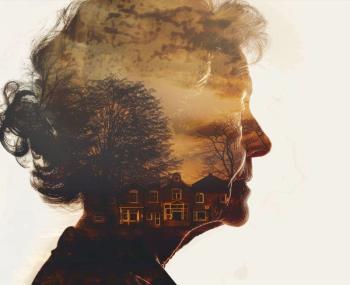
Methicillin-Resistant Staph on the Rise-and on the Loose
Methicillin-resistant Staphylococcus aureus (MRSA) became a "bug" to be reckoned with nearly 50 years ago. At that time, however, it targeted only patients who were exposed to infection in the hospital.In recent years, the epidemiology of MRSA has significantly changed. The pathogen is now a major culprit in community-acquired infections.
How are community-acquired MRSA skin infections best managed?
Methicillin-resistant Staphylococcus aureus (MRSA) became a "bug" to be reckoned with nearly 50 years ago. At that time, however, it targeted only patients who were exposed to infection in the hospital.
In recent years, the epidemiology of MRSA has significantly changed. The pathogen is now a major culprit in community-acquired infections1; among those who have been infected are athletes,2 prisoners, intravenous drug users, men who have sex with men, patients with HIV,3 and military personnel. MRSA is responsible mainly for skin and soft tissue infections, but it can also cause sepsis and necrotizing pneumonias.
A disturbing trend is the rise in community-acquired MRSA infections in patients who have no established risk factors, such as previous hospitalization, HIV infection, or residence in an extended-care facility. In some US cities, MRSA is now the most common pathogen isolated from skin and soft tissue infections. A recent study by Moran and coworkers1 found that in 320 of 422 patients who presented to emergency departments with skin and soft tissue infections, S aureus was the responsible pathogen; MRSA was identified in 249. To put these numbers in perspective, in 2000 only 3% of staphylococcal isolates in Minnesota laboratories were identified as MRSA. From 2001 to 2004, at a medical center in Los Angeles, the percentage of MRSA isolates from skin and soft tissue infections increased from 29% to 64%.1
A FEW PRIMARY CARE PEARLS
Diagnostic pearl. Patients with MRSA infection attributed the lesion to a "spider bite" more often than those with skin infections caused by other bacteria. This phenomenon probably stems from the severity of the pain associated with MRSA infection. Suspect MRSA when a patient attributes the redness and swelling of a skin lesion to a spider bite (Figure).4
Treatment pearls. The primary treatment of MRSA skin and soft tissue infections is not antibiotics, but rather incision and drainage. This procedure was curative in 85% of the patients in the study by Moran and coworkers.1 Evidence of the efficacy of drainage is that these patients were cured even though 57% of them received antibiotic therapy that was inconsistent with the results of susceptibility testing.
Another take-home message from this study is that the susceptibility of MRSA to erythromycin was a paltry 6%.1 Resistance to erythromycin can also predict a possible resistance to clindamycin that may not be evident by routine testing.5
Most patients receive trimethoprim/sulfamethoxazole (TMP/ SMX), rifampin, or doxycycline for the ambulatory treatment of MRSA. Fluoroquinolones are not a good choice. TMP/SMX plus rifampin may be the optimal antibiotic therapy.
Prevention pearl. Observe standard and contact precautions when you are exposed to patients with MRSA infection, whether in an ambulatory or inpatient setting.
THE BOTTOM LINE FOR YOUR PRACTICE
Maintain a high index of suspicion for MRSA whenever a patient presents with a skin or soft tissue infection, and rely on incision and drainage as the primary therapy.
References:
REFERENCES:
1.
Moran GJ, Krishnadasan A, Gorwitz RJ, et al. Methicillin-resistant
S aureus
infections among patients in the emergency department.
N Engl J Med
. 2006; 355:666-674.
2.
Gautschi OP, Zellweger R. Images in clinical medicine. Methicillin-resistant
Staphylococcus aureus
abscess after intramuscular steroid injection.
N Engl J Med
. 2006;355:713.
3.
Smith M. IAC: MRSA risk 18 times higher in HIV patients.
Medpage Today
. Available at:
http://www.consultantlive.com/display/article/10162/18809
. Accessed April 3, 2007.
4.
Benoit R, Suchard JR.
Necrotic skin lesions: spider bite-or something else?
Consultant
. 2006;46:1386-1394.
5.
Grayson ML. The treatment triangle for staphylococcal infections.
N Engl J Med
. 2006;355:724-727.
Newsletter
Enhance your clinical practice with the Patient Care newsletter, offering the latest evidence-based guidelines, diagnostic insights, and treatment strategies for primary care physicians.



























































































































































































































































































